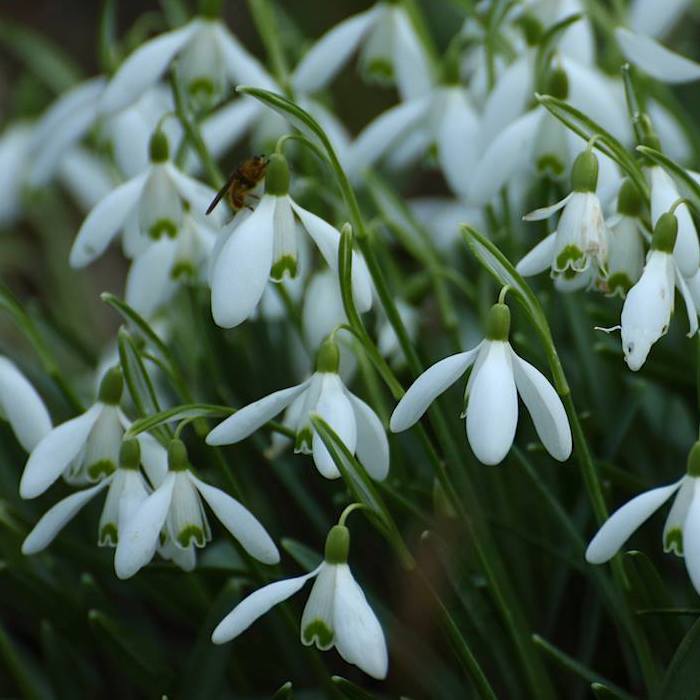
In February, the weather might still be cold and blustery, but snowdrops, the early heralds of spring, are already poking out their gleaming white heads.
Photo: Amanda Scott
Scientific name: Galanthus nivalis
Other common names: Common Snowdrop, Flower of Hope, Candlemas Bells, February Fairmaids, Snow Piercer, Dingle-dangle.
What to look for:
• Family: Amaryllidaceae (Amaryllis family)
• Flowers: Solitary white flowers, drooping. Six tepals, of which the three outer are larger, while the inner three are green-tinged.
• Leaves: Greyish-green basal leaves.
• Height: Up to 15 to 25 cm.
• Where: Deciduous woodlands, parks, churchyards; locally abundant.
• When: Flowers January to March.
• Habit: Upright
“The morning star of flowers”
James Montgomery (1771–1854)
Snowdrops are among our most familiar flowers, each year providing an early hope of spring. It is surprising, then, that it is not as native to the British Isles as you may think. Although some colonies in the west and south have a good claim to native status, many others are naturalised, spreading from cottage gardens and parks where they have been planted over the centuries. The first recording of snowdrops in the wild dates from 1778, before which it had been recorded as a cultivated species, back in 1597.
Flowering early in the year from bulbs, this perennial flower can be found in swathes of white blooms. They might look delicate, but they are able to push through icy soils using the toughened tips of their leaves: small wonder, then, that one of their names in England is Flower of Hope.
Did you know…?
…The superstitious among us may still consider it unlucky to bring a snowdrop into the house before Valentine’s Day, as otherwise any unmarried women of the household might never find a husband.
…In the Victorian ‘language of the flowers’, the snowdrop represents virginity or purity.
…Traditional medicine used snowdrops as a painkiller, but beware – the whole plant is poisonous to humans if eaten.

More information and references:
Mabey, R., 1997. Flora Britannica. Chatto & Windus, London.
Rose, F. and O’Reilly, C., 2006. The Wild Flower Key, 2nd edition. Frederick Warne, London.
Published: January 2018
Author: Amanda Scott
Photos: Amanda Scott
